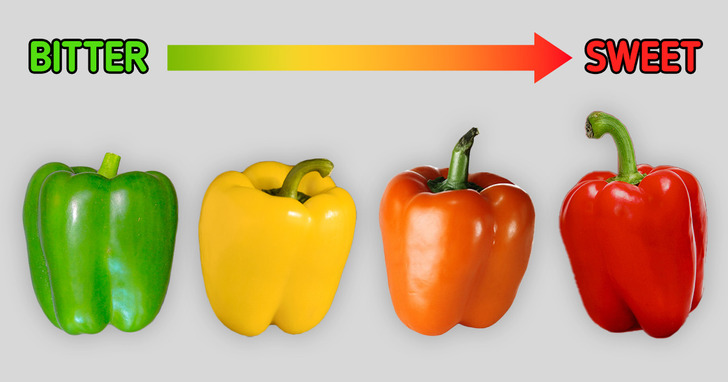Your Quick Guide to Pick the Best Bell Pepper
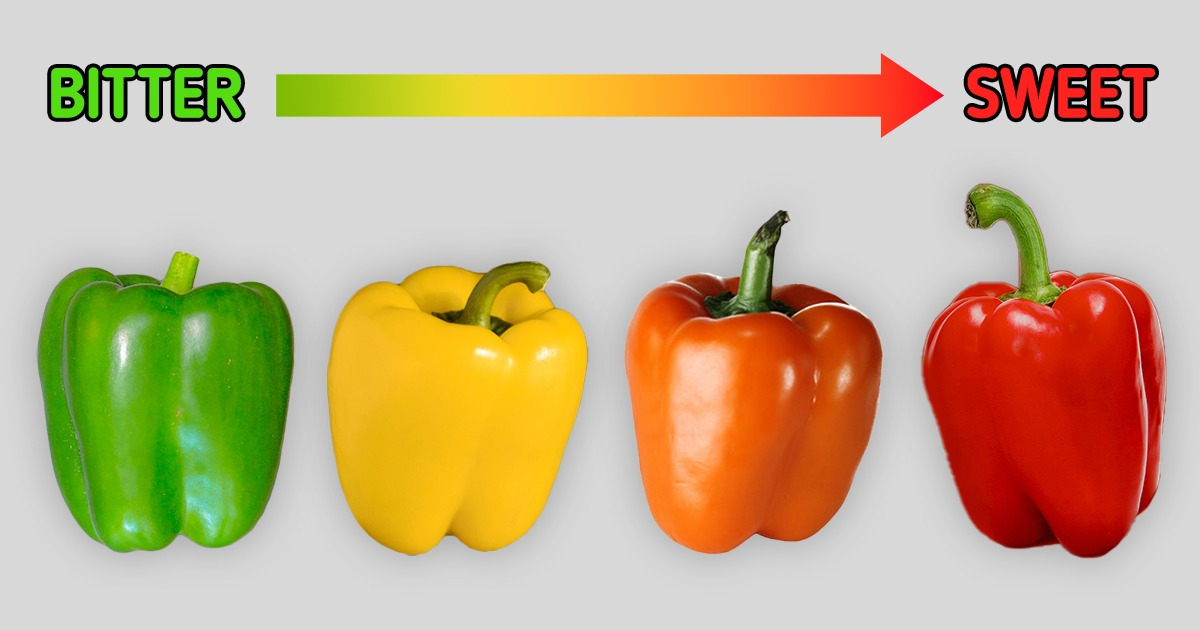
Bell peppers belong to the nightshade family and are an excellent source of vitamins A, C, K, potassium, and more. Their flavor varies by the color they have, which comes in handy to know which one to pick next time you go to the grocery store. That being said, 5-Minute Crafts has prepared this guide just for you to check out.
1. Color
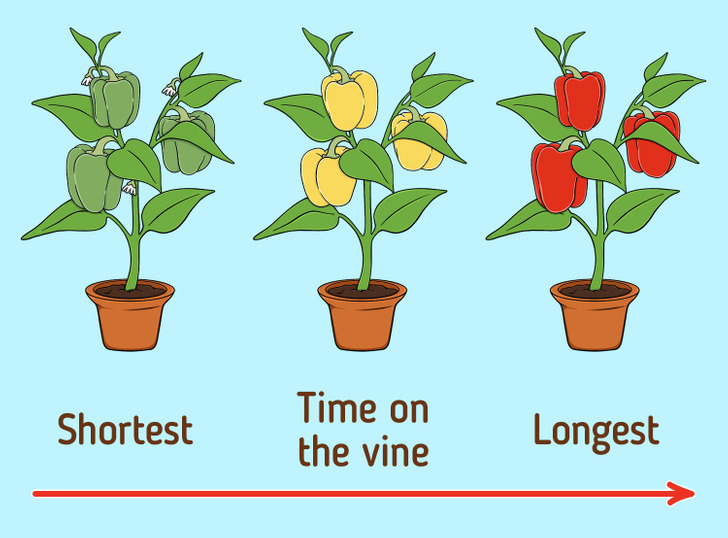
All bell peppers come from the same plant, and they can be green, yellow, orange, or red, depending on their ripeness and how much time you’ve given them to ripen. If you harvest the green peppers before they reach maturity, they won’t be so ripe. However, they’ll turn yellow when you don’t gather them and allow them more time, just like how you’d get a fully ripened red bell pepper when given enough time, allowing it to fully develop and have more pigment.
2. Nutrition
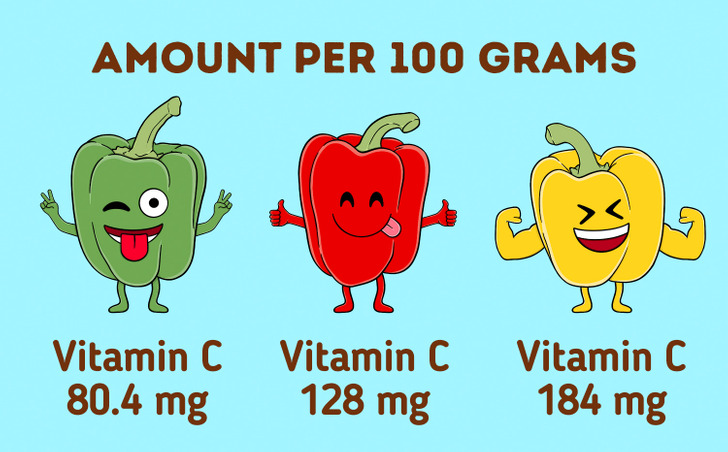
First of all, all bell peppers are superb antioxidants and an excellent addition to a healthy diet thanks to being a great source of fiber, vitamin C, and beta-carotene. Still, their exact nutrition quantity depends on their colors. The red pepper is 9 times richer in beta-carotene and has twice as much vitamin C than the green type. Because they spend less time on the vine, the green bell peppers have the lowest nutritional value. They also contain the following:
- Vitamin B6 for the formation of red blood cells
- Vitamin K1 for blood clotting and bone health
- Potassium for heart health
- Folate, or vitamin B9
- Vitamin E for healthy nerves and muscles
- Vitamin A, a good supplement for vision, growth, reproduction, and immunity
3. Flavor
A bell pepper’s color is an indicator of its ripeness and flavor. The more colorful it gets, the sweeter it tastes. Out of all of them, the green ones are the most bitter, and yellow or orange ones are less bitter. On the other hand, red bell peppers are the sweetest, so you can cook them in stews or use them with gravy. Plus, their yellow-red-golden or brown tones can be very appetizing.
4. Price
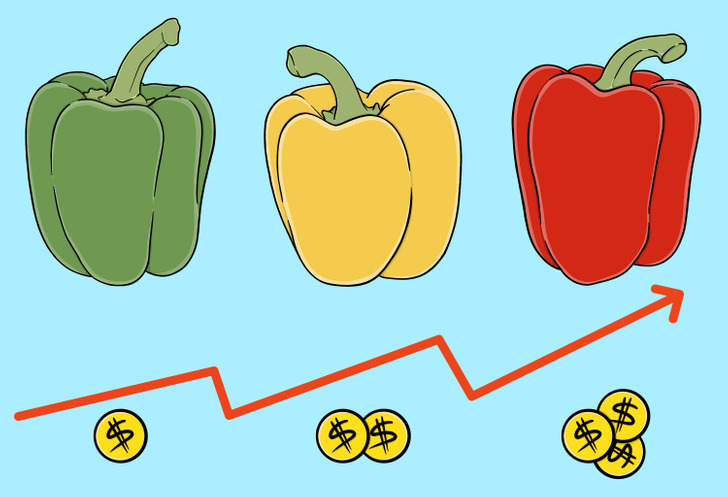
How soon you gather or harvest them will also affect their price and cost. Take green peppers, for example. They’re picked earlier than the rest, so they’re generally the cheapest. It also means that their production is the fastest, so more products can be sold. On the other hand, red bell peppers are preferred more thanks to their sweet taste. However, they need more time and good care to ripen, so they’re more expensive.
Bonus: how to store bell peppers properly
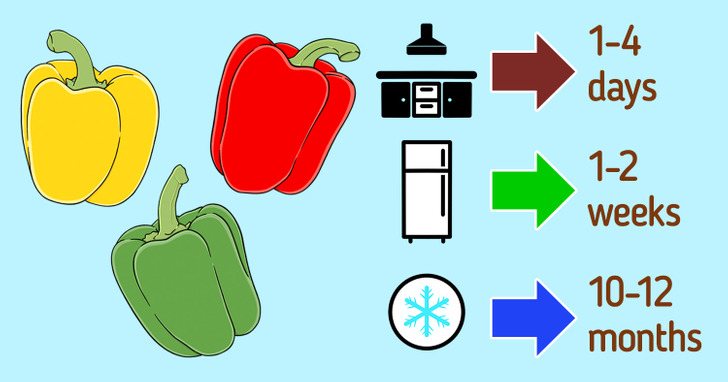
Like other fresh produce, bell peppers also have a limited shelf life, which depends on whether you choose to keep them at room temperature or in the refrigerator. Also, it is essential to know how to store them in one piece or sliced. Let’s break it down.
- Cutting the peppers will reduce their shelf life, regardless of whether they’re in the fridge or on the counter (at room temperature). Ensure to cut the veggies only when you intend to eat them right away.
- Keeping them at room temperature will result in the shortest shelf life; they won’t last more than 5 days. If you cut them, they might only last a couple of hours.
- Refrigerating will last up to 2 weeks. Again, cutting them will shorten their shelf life, even if you put them into the fridge. You should use cut peppers in the following 3 days.
- Freezing the peppers will give them a shelf life of a year since the super low temperature will slow bacterial reactions that cause spoilage.
